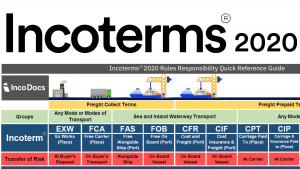Giving instructions to suppliers is part of life for most of us. But the cost of not giving proper instructions could be substantial. If your supplier doesn’t understand what you want him to do then he can only guess. This may not be to your best advantage and could even be dangerous. It is exactly the same with goods forwarding and import/export projects.
In order to reduce the risk of incorrect or incomplete instructions, we have prepared a document that we ask our clients to complete. This makes the process easier and more accurate, to the benefit of all parties involved.
Proper forwarding and clearing instructions, as they are prepared by us for your convenience, include all the information required to professionally forward your consignment, be it import or export, or tri angular traffic.
If these instructions are incomplete it means that your forwarder and clearing agent do not get complete instructions and hence do not know what to do – and costly mistakes can be made.
Here are a few examples of important information that your goods forwarder requires from you:
1. Terms of delivery (Incoterms®)
First and foremost what are your terms of delivery according to the 2020 Incoterms®? These terms state which portion of the freight you pay and which liability you accept. These must form part of every international sales contract and constitute one of the most important pieces of information.
2. Transport/marine insurance
Every consignment should be insured since the risk of damages and losses is always present. Not to insure, through Novotrans or directly with a goods insurance broker, is a real danger. It can be done through your forwarder or a good broker. The value to be insured should also always include the freight charges, plus 10%. (Cif value & 10%).
3. Documentation required
This is a very important instruction. Since the original B/L represents the value of the consignment and is a tradeable document, you do not want to release it if your consignment is not paid for.
It is you who decides who is getting which document and when. These instructions need to be given to us under any circumstances for an export shipment.
4. Correct consignment details
This block shows how the shipment is marked (address), what it consists of, weight and volume.
It needs to be understood that the exporter is liable towards the carrier for the weight of the consignment (in the case of containers or when we do not have the opportunity of weighing your consignment).
5. Any other instructions you may have
You may wish us to neutralise a consignment in the case of tri angular trade, where a shipment is forwarded directly from a third country to your client outside of South Africa. In other words a shipment does not touch this country.
You may wish us to organise a pre shipment inspection for exports to countries like Kenya, Tanzania and Nigeria.
Fumigation of a consignment may also become necessary.There are many things that need to be communicated and understood when importing or exporting. If you are not sure how this applies to you, or simply looking for some “insider” advice, please get in touch with us. We will happily share some further insights with you.




